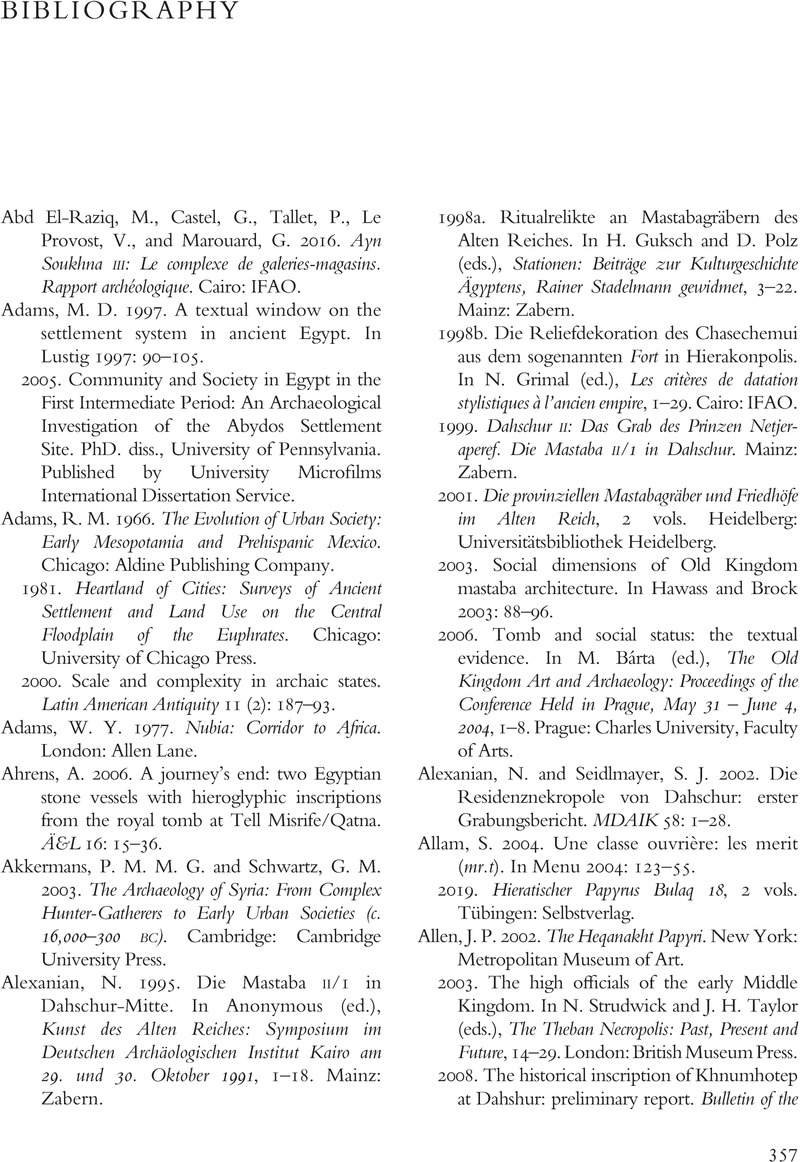Book contents
Bibliography
Published online by Cambridge University Press: 06 February 2024
Summary

- Type
- Chapter
- Information
- The Archaeology of Pharaonic EgyptSociety and Culture, 2700–1700 BC, pp. 357 - 402Publisher: Cambridge University PressPrint publication year: 2023



